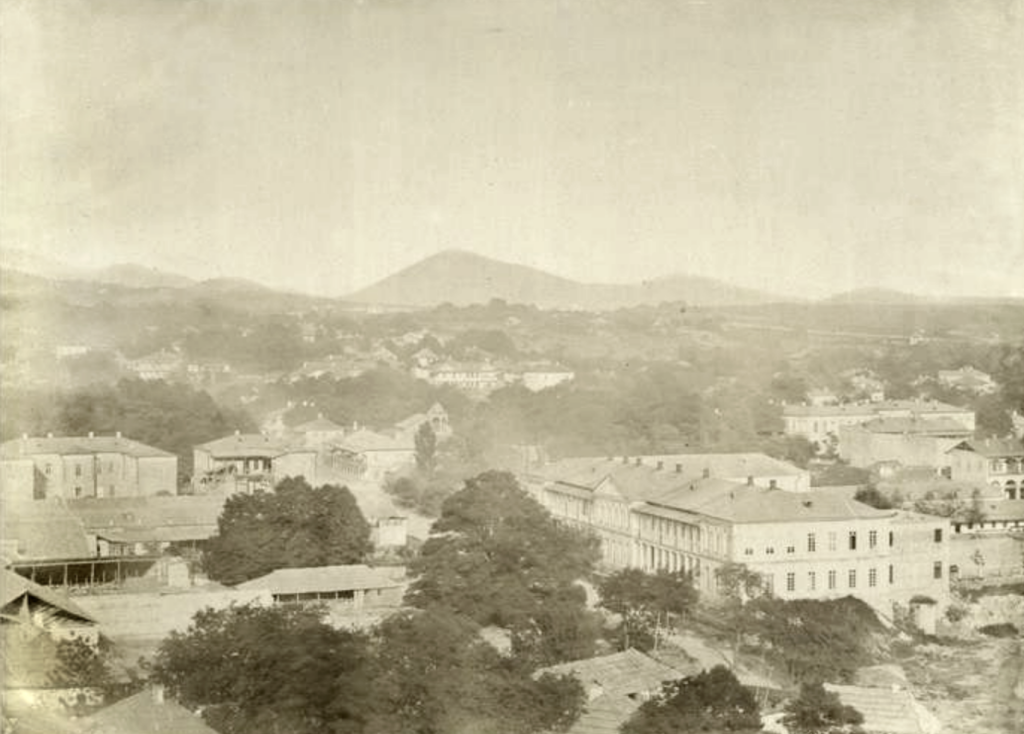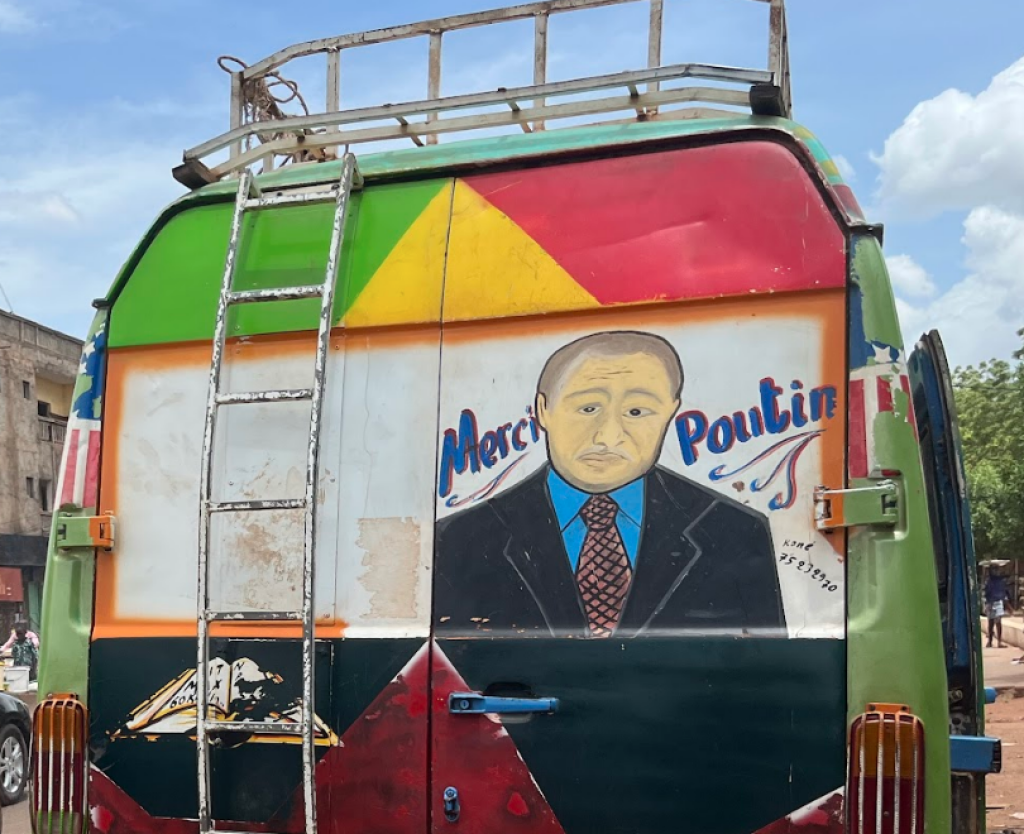Antony Kalashnikov is a Postdoctoral Fellow in the Department of History at the University of Waterloo, working on Soviet understandings of futurity. His monograph, Monuments for Posterity: Self‑Commemoration and the Stalinist Culture of Time came out in 2023 with Cornell University Press. His current project studies regime censorship of post‑Stalin utopian science fiction.
Julie Deschepper is an Assistant Professor in Heritage and Museum Studies at Utrecht University, specializing in the cultural heritage of the USSR. Her first monograph, Les temps du patrimoine. Une histoire matérielle de la Russie (1917–2017) is forthcoming in 2024 with CNRS Editions. Currently, she works on the weaponization of culture and the uses of heritage during the Russo‑Ukrainian war.
Federica Rossi is an Assistant Professor in the History of Architecture at the Iuav University of Venice and a Research Associate at Kunsthistorisches Institut in Florenz and Università della Svizzera italiana. She works on Russian and Soviet art, architecture, and culture. She has published numerous studies, including Palladio in Russia. Nikolaj L’vov architetto e in‑tellettuale russo al tramonto dei Lumi (2010), and edited the exhibition catalogue Piranesi. Do i posle. Italiia – Rossiia. XVIII‑XXI veka (2016).
This piece uses extracts from the editors’ introduction to Time and Material Culture: Rethinking Soviet Temporalities (Routledge, 2025). Material has been adapted for publication here with permission from the publisher.
Being socially constructed, the perception and experience of time is diverse and malleable. Because it organizes individual and public life, time is both the instrument and object of politics. In the twentieth century, this relationship is particularly evident in the case of the Soviet Union, whose ideocratic regime consciously aspired to reforge the relationship between past, present, and future.
Our recently published volume, Time and Material Culture: Rethinking Soviet Temporalities, explores the unique culture of time that emerged in response to these initiatives. It does so by tracing the materialization of time. After all, while itself invisible, time is made manifest in the material environment and embodied in a vast range of things, which have their own temporal qualities and relationships to the broader culture of time. Conversely, time can also (perhaps provocatively) be considered a material process. This approach proves particularly fruitful in the Soviet context, where material culture was consciously instrumentalized to facilitate the rapid transformation of society through time, and where, more generally, control over both time and space was treated as central to political domination.
In writing the biographies of various Soviet things, and in analyzing their temporal incarnations, the volume contributes to a better understanding of the cultural history of the Soviet Union. Moreover, it offers methodological and theoretical reflections in the wake of temporal and material turns applicable beyond the USSR, suggesting new avenues for cross-regional and global comparisons.
The book is divided into three parts that we hope confirm that temporality and materiality can be used fruitfully in conjunction with one another to query the uniqueness of Soviet temporal culture. As Part 1 demonstrates, there was no such thing as a singular, coherent “Soviet temporality,” an assumption common to scholarship foregrounding the unity and enduring significance of Marxist-Leninist historicism. Rather, the best efforts of the regime to standardize and centralize representations and experiences of time foundered on internal contradictions, external limitations, and the sheer geographical breadth and cultural diversity of the Soviet Union.
For instance, as Heather DeHaan’s chapter on Baku’s urban development demonstrates, dominant narratives consigned traditional, non-Russian, underdeveloped spaces to a “non-time,” supposedly in the process of being overcome by Soviet modernization efforts. However, this temporal narrative disingenuously masked a fundamental lack of state capacity: Soviet development models themselves reproduced and generated such “backward” spaces, which were in fact fully contemporaneous features of Soviet modernity.
Nastia Volynova’s chapter similarly sheds light on the alternative temporalities that refused to be subsumed under the umbrella of the supposedly rational, universal clock-time of Soviet infrastructure development. By examining the materiality of water, Volynova navigates the “non-scalar” temporalities present in the Great Volga construction project: those resisting to, and those co-present with, the rational, “scalar” time of industrialization.
For its part, Julie Deschepper’s contribution shifts to the twilight years of the Soviet project, uncovering the unprecedented extension of heritage preservation measures to Soviet-era monuments. Provocatively, the chapter treats this policy as testifying to an emerging culture of “Soviet presentism,” which responded to a crisis of faith in the future, and a sense of insurmountable distance to the Revolutionary past.
The chapter by Nelly Bekus also examines the rise of preservationism in late Soviet urban planning. Examining the reconstruction of Minsk’s Nemiga Street, Bekus traces this shift to two converging developments: the transnational diffusion of heritage preservation models, and the proliferation of local, nationalized visions of history amidst the fracturing state socialist project.
Part 2 of the book returns to the fundamental categories of the Soviet teleocracy—rooted as it was in Marxist-Leninist historicism—but reexamines them in light of the material mediums through which the official temporality was represented. The chapters gathered here are sensitive to the scales, durations, speeds, and rhythms of officially-endorsed temporal visions.
Reed Johnson’s chapter makes manifest the invisible conceptual metaphors that undergirded the temporal vision of the Stalinist industrialization program. Specifically, the representation of time as space—particularly suited to the visual language of Soviet posters—played a key role in mobilizing the public in the forced modernization drive.
In her contribution, Sofia Dyak depicts how the city of Lviv was (re)imagined in the pre- and post-Second World War period in line with the shifting perceptions of the pre-revolutionary past(s). It demonstrates that, colliding with older material legacies, official temporal models developed complex relationships to historical continuity.
Federico Marcomini, for his part, examines the appropriation of nomadic architectural motifs in sedentary monumental constructions in Stalin-era Central Asia. Harnessed as they were to new, national architectures, the trivialization of indigenous forms was key to inscribing and propagandizing the narrative of modernity amongst the nomadic peoples of the Soviet Union.
Ekaterina Knoblauch’s chapter on late Soviet amateur filmmaking uses the concept of “hybrid temporality” to capture points of interaction between official and private temporalities, as mediated by the amateur filmmaking kit. These objects elicited a deep personal connection among amateur filmmakers, but a strong dependency on the state for provisioning, maintenance, and know-how significantly impacted the temporalized narratives conveyed in amateur films, leading to a fundamental “hybridity.”
Crucially, material culture serves as the means for humans to know and integrate time into their experiential understanding of the world. Part 3 explores this intimate dynamic most directly through a focus on bodily perceptions and sartorial mediations of Soviet temporality.
James Rann’s contribution examines Vladimir Mayakovsky’s personal garments to reveal the latter’s potential to encode the poet’s alternative temporal visions and experiences, to “create pockets of ‘bespoke time.’” The chapter situates their complex symbolism in the interstices of evanescence and endurance.
Olga Voronina goes on to trace the temporal understandings incarnated in the exhibition approaches in early Soviet literary museums. Surprisingly, despite the supposed materialism of official ideology, the chapter reveals a curatorial propensity towards metaphysics, whereby the “sacral materiality” of personal possessions objects and original manuscripts emphasized the death-transcendence and enduring contemporaneity of canonized authors.
Finally, Ekaterina Kulinicheva’s chapter demonstrates the centrality of time as a key prism through which late Soviet individuals were expected to appropriately express themselves in fashion. Surveying theoretical and advice literature, the chapter situates the normative temporalities of fashion against the backdrop of both the original Bolshevik utopian project, and the temporal culture of the opposing, Western fashion industry.
The volume closes with a guest-written reflection by Alexey Golubev, a leading expert on Soviet material culture, who has kindly agreed to participate in our project. His contribution spotlights the role material objects play in mediating the imposition and contestation of new temporal regimes, a dynamic especially evident in the negotiations of Soviet chronopolitics.
Our collective efforts constitute an intervention that brings nuance to our understanding of Soviet temporality by pointing to the diversity of national, regional, local, and physico-geographic contexts, which fractured imposed temporal culture into parallel and sometimes conflicting temporalities. It acts as an invitation to further research and comparisons with the temporal culture of other twentieth-century socialisms and beyond.



